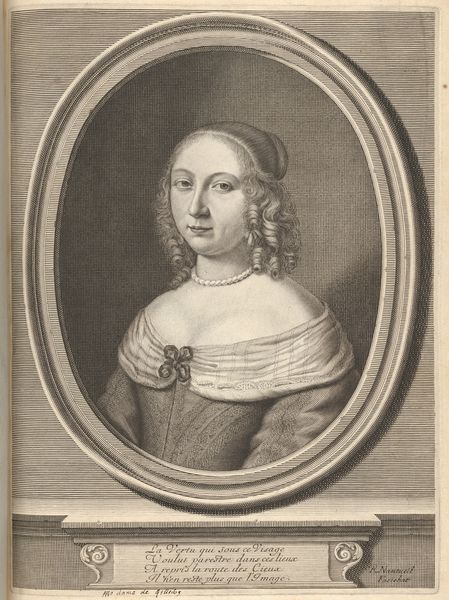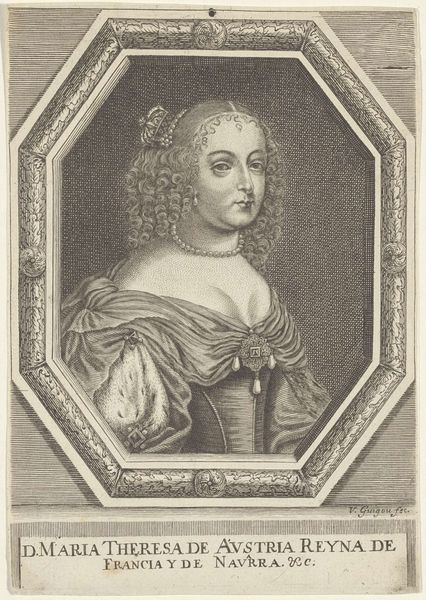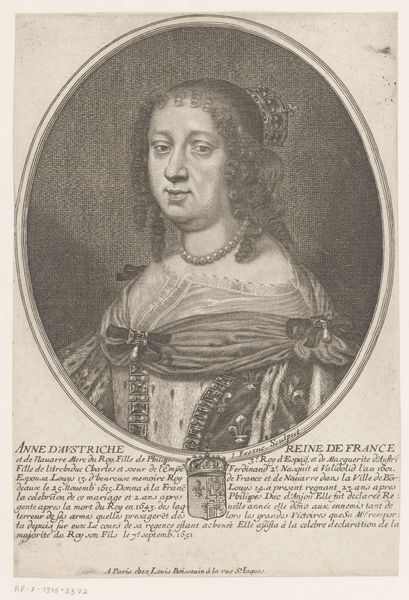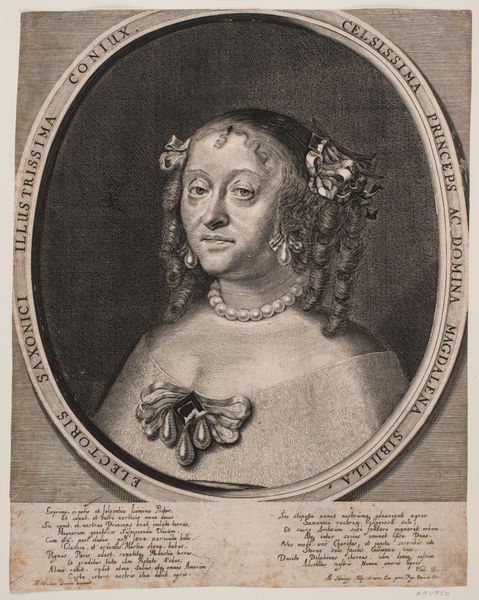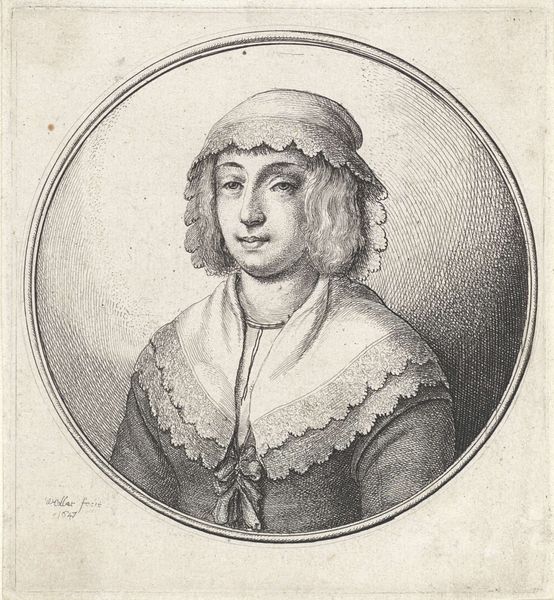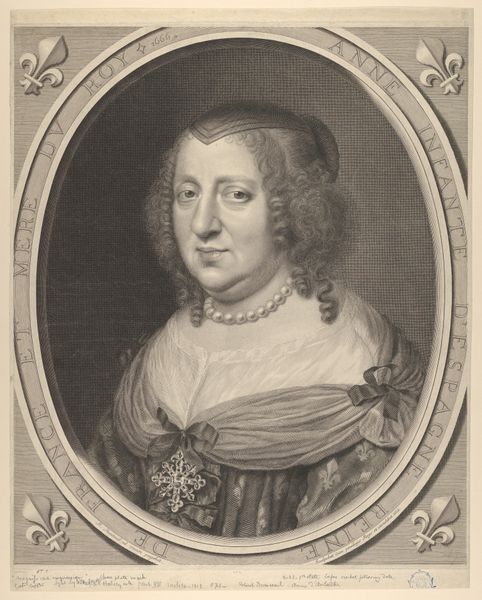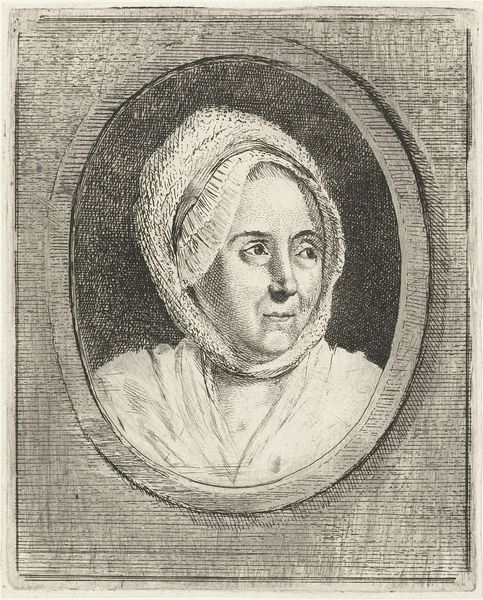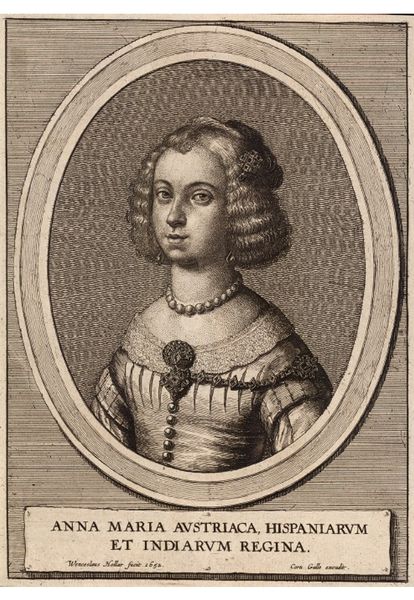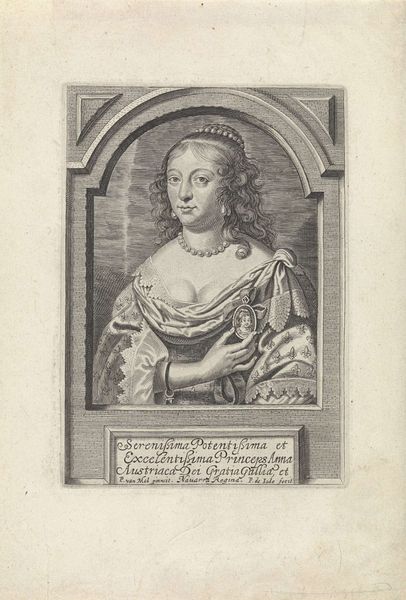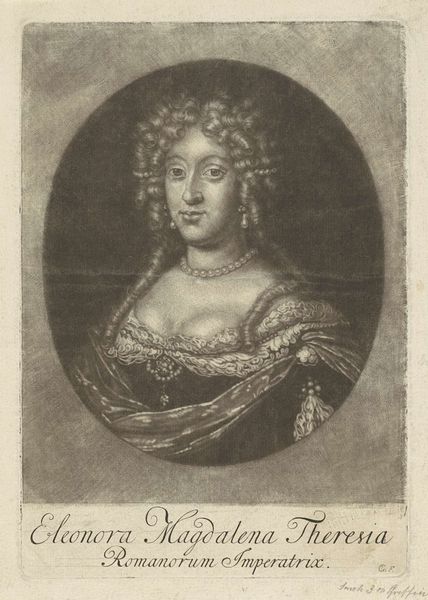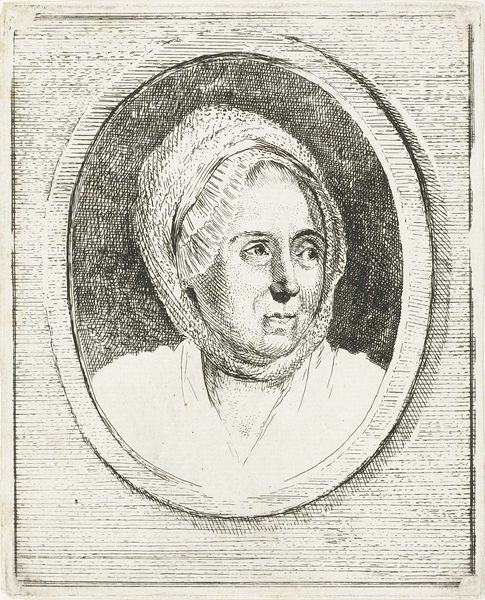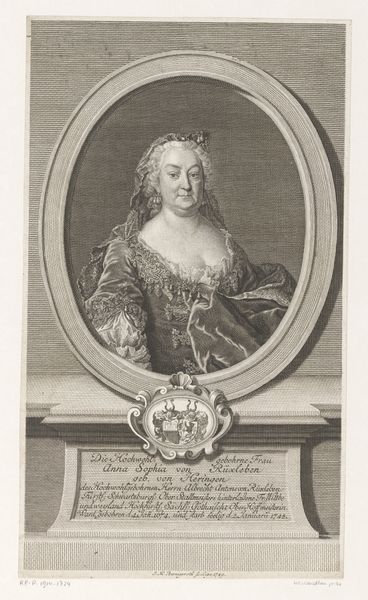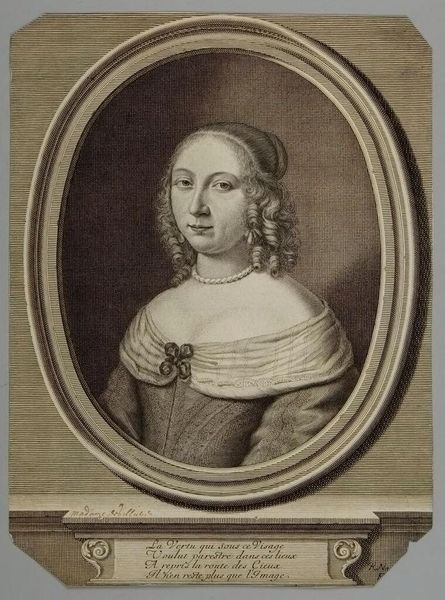
print, engraving
#
portrait
#
baroque
# print
#
history-painting
#
engraving
Dimensions: height 86 mm, width 59 mm
Copyright: Rijks Museum: Open Domain
Curator: Here at the Rijksmuseum, we have an engraving from the 18th century depicting Maria Louisa of Hesse-Kassel. While the engraver remains anonymous, this print gives us insight into the visual language of the period. Editor: It’s striking, in a way. The use of such fine lines to create texture… but also, it seems to capture a sense of guardedness, or perhaps resignation in her eyes? Is it just me? Curator: The formal elements do present a certain... austerity, yes. Note the artist's reliance on line and the contrast created through hatching and cross-hatching. The oval frame also directs the eye to her facial features. Editor: Beyond aesthetics, I wonder about Maria Louisa herself. She was the Princess of Orange as the wife of John William Friso. It's powerful that such an image can remind us of how women's identities were historically often linked to their marital status. "Louisa, Princess Dowager of Douariere” as it is labeled at the bottom. Curator: Yes, the inscription highlights her position, wouldn’t you agree? This print could have served multiple functions. It would solidify her image within elite circles, for example. Look how it subtly displays rank. The lines denoting fabric texture of the gown suggest luxury and, by extension, power. Editor: Precisely. What’s particularly striking is that society portraits helped to create social expectations and gender roles that confined women like Maria Louisa. Curator: I suppose even these tiny formal details offer much in way of insights. Notice how even her hair, meticulously rendered in those looping curls, speaks volumes about prevailing aesthetic and cultural values. Editor: Indeed. And thinking about how that ideal influenced—or pressured—the sitter’s self-presentation gives a wider framework for our reading this engraving today. Curator: Studying how such engravings are constructed is fundamental for scholars and anyone looking to improve their visual vocabulary. Editor: Absolutely. We can both consider an aesthetic past, but then ask what meaning a historical artifact such as this engraving may contain for contemporary culture and ourselves.
Comments
No comments
Be the first to comment and join the conversation on the ultimate creative platform.
